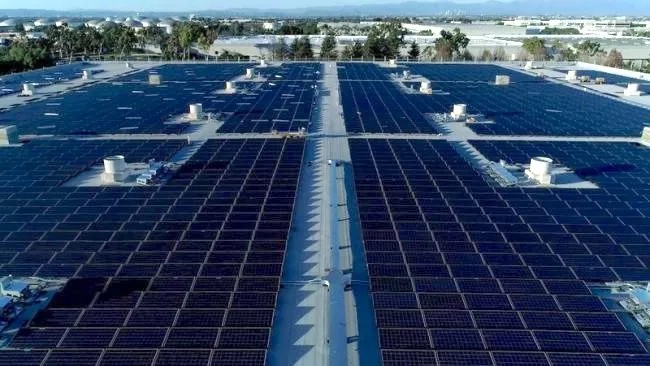 By DR. MIRIAM ACZEL
By DR. MIRIAM ACZEL
The increasing frequency of power outages, as well as the growing severity of natural disasters like wildfires, poses significant threats to our national electric grid system. These risks, along with others such as cybersecurity threats, are a good reason to revisit the 1880’s debate over whether Direct Current (DC) or Alternating Current (AC) electricity would power the future–dubbed the War of the Currents.
Inventor Thomas Edison had developed a solution using DC, which ran continuously in one direction, like a battery, and became the standard during electricity’s early years in the United States. Because direct current is more stable than an AC, it can be used to transport electricity farther and with greater efficiency thanks to reduced electricity loss.
George Westinghouse and Edison’s former employee Nikola Tesla, however, argued that AC was a superior solution because it allowed power to be scaled up more easily. Whereas DC can be more challenging to convert to greater or lower voltages, AC can change direction several times per second, enabling it to be converted to different voltages with the use of a transformer.
AC has largely won the battle for large-scale electricity generation because it is safer to transmit across long distances as compared to DC. The first major victory for AC came in 1893, when Westinghouse and Tesla built the first hydroelectric power plant at Niagara Falls—harnessing power for New York City using AC current. However, although electricity today is largely powered through AC, our computers, electric vehicles, LED lights, and electric vehicles all use DC power.
DC Power and Microgrids
Over 150 years later, this famous debate is being revisited as there is growing interest in the potential to implement microgrids as local energy sources. Microgrids–local distribution systems that can offer backup generation if the central grid fails–generally operate while connected to the main grid but have the critical ability to disconnect and operate using their own energy source when necessary. The microgrid connects to the main grid at a coupling point, which keeps the power at the same voltage as the main distribution grid, with a switch that can detach it, enabling the microgrid to ‘island.’
There is now an ongoing discussion on how AC—which generally powers the main electrical transmission grid—and DC could work together in a microgrid for greater efficiency and resiliency. Extreme weather events, planned power shutoffs and grid interruptions, and other critical risks to our electric grids have led to discussion on how to harness the power of combined approaches to enhance overall grid efficiency and reliability, promote the integration of renewable energy technologies, and reduce utility costs.
Edison’s vision revisited
DC microgrids may play a key role in bridging the gap to sustainable energy. Many sources of renewable energy such as wind farms and solar-thermal power plants require large installations, frequently located far from the populous urban areas. This requires long transmission and distribution lines to connect the sources to customers, leading to energy loss estimated to be roughly 7 percent in the US.
Because of this, Edison’s vision of local electricity generation may hold promise as a solution by employing a system of local power generation and distribution: a microgrid running on DC current. The modern conception is similar to what Edison initially envisioned, with the additional benefit that the local DC grid can function in parallel with the surrounding AC grid or have the ability to operate independently.
For example, in the wake of 2012’s Hurricane Sandy, which caused more than US $50 billion in damages and led to massive power disruptions, Bosch developed a novel microgrid system using DC technology with potential for significant energy efficiency, cost, reliability, and safety benefits over AC systems. This microgrid system uses distributed generation resources (DER) such as solar photovoltaics (PV), which are then connected directly to high-efficiency DC ventilation and lighting systems to maximize the efficiency of local resource generation.
Converting, inverting, and back again?
The key difference between AC and DC is in the direction in which the electricity flows through a conductor such as a wire. In DC, the electrons flow in only one direction, ‘forward,’ while in AC the electrons switch directions—sometimes ‘forwards’ and sometimes ‘backwards.’ Alternating current is the best way to transmit electricity over large distances, which is why the AC system is the main system for distribution in the main grid. Converters are devices that convert the voltage from AC to DC, such as the transformers that change the voltage of the AC from wall outlets so we can charge our cell phones and power flat screen TVs, while inverters convert the voltage from DC to AC.
DC microgrids avoid a majority of distribution and transmission losses and also avoid wasting energy from converting AC to DC–currently required for many objects such as LED lights, electric vehicles, and computers. Some studies event suggest that a majority of the electricity used in commercial buildings goes into serving these loads requiring DC energy.
Solar power is an interesting type of DC power, as it uses the photoelectric effect. Light causes electrons on the surface of a material to become excited or dislodged, leading to a negative charge, in a single direction. But as long as there is a source of energetic light, the charge doesn’t end, providing a non-exhaustible source of renewable energy. It is increasingly common to see solar PV panels mounted on houses and commercial buildings, but even if all the power generated is used locally (to minimize distribution losses), the electricity flowing from the panels is often changed to AC using an inverter—which alone leads to loss of about 10 percent of the energy! The AC then feeds various loads and often is converted back to back to DC, leading to additional loss of energy. DC microgrids may bridge this gap by being able to distribute and use DC directly, avoiding the round trip from DC to AC and then back to DC again.
DC microgrids for the future
With growing need for energy efficiency and reducing greenhouse gas emissions, DC microgrids may provide a critical key to moving towards a more sustainable energy future.
Honda’s campus at Torrance, CA features a 2 MW DC microgrid and over 6,000 solar panels.
Image credit: PRNewsfoto/Honda
Dr. Miriam Aczel is Leaders in Energy’s Director of Scientific Communications. Miriam is a postdoctoral scholar at the California Institute for Energy & Environment (CIEE) based at UC Berkeley, working on the Oakland Ecoblock project. She is also currently an Honorary Research Associate at Imperial College London’s Centre for Environmental Policy, with a focus on international energy science and policy, with a focus on mitigation of environmental and health impacts of shale gas. Miriam earned her PhD at Imperial College London in 2020, where she was a President’s PhD Scholar.She is also co-founder and co-director of the Amir D. Aczel Foundation for Research and Education in Science and Mathematics, a nonprofit based in Cambodia.
Editor’s note: this article originally appeared on the EcoBlock blog



Leave a Reply